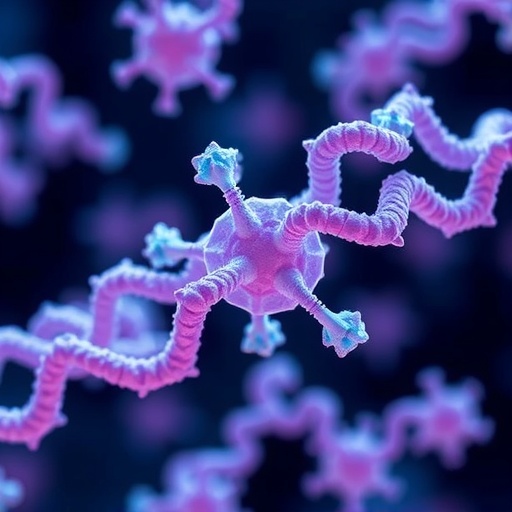
In the ever-evolving field of forensic science, accurate age estimation remains a pivotal element, underpinning everything from legal justice to anthropological research. A groundbreaking study from Brazil has recently unveiled novel insights into the fascinating process of pulp involution and its direct relationship with chronological age. Published in the prestigious International Journal of Legal Medicine, this research delves deeply into dental pulp changes — those microscopic aging signatures hidden within our teeth — to offer a refined method for age assessment, which could reshape forensic practices worldwide.
The human tooth, often overlooked beyond its functional role in eating and speaking, houses within it a remarkable biological record. At the heart lies the dental pulp, a soft tissue riddled with nerves and blood vessels ensconced inside a hard cavity. As humans age, this pulp undergoes a natural decline known as pulp involution, marked by a progressive reduction in size and volume caused by the gradual deposition of secondary dentin. Unlike external markers that can be altered by environmental factors, pulp involution provides a robust, internally preserved indicator of age—a veritable time capsule inaccessible without advanced imaging technologies.
The Brazilian research team led by da Silva and colleagues embarked on a meticulous journey to characterize these internal pulp changes in a representative sample of the Brazilian population. By harnessing high-resolution imaging and sophisticated morphometric analyses, the group quantified pulp volume reduction and documented the sequential stages of involution with unprecedented precision. Their approach utilized cone-beam computed tomography (CBCT), a non-destructive technique revolutionizing the visualization of dental structures in three dimensions, enabling age assessments without the need for tooth extraction or invasive procedures.
This study’s significance extends beyond its methodological advancements. Forensic practitioners historically grapple with uncertainties when estimating age, especially in adult individuals where traditional skeletal markers may offer diminished reliability. Teeth, however, continue to evolve subtly throughout life, and their pulp chambers offer a nuanced archive of these incremental modifications. By correlating pulp chamber morphology tightly with chronological age, the researchers have introduced a novel biological clock mechanism that leverages natural physiological aging, potentially increasing accuracy in forensic age estimation amidst diverse global populations.
At the core of their findings lies the validation of a staged pulp involution model delineating distinct phases of reduction correlated with the progressing age brackets. Early stages reflect minimal secondary dentin deposition, preserving substantial pulp volume, while advanced stages exhibit conspicuous narrowing and calcification, almost obliterating the pulp cavity. This staging provides a stepwise framework for forensic experts to pinpoint an individual’s age range with greater confidence, overcoming the notorious variability previously encountered in age estimation protocols.
Importantly, the Brazilian sample population used in this investigation adds crucial value to the global forensic narrative. Brazil’s rich genetic diversity and environmental heterogeneity mirror the complex reality forensic scientists face worldwide, where ethnicity, nutrition, and lifestyle factors can influence biological aging differently. By demonstrating the robustness of pulp involution stages across this varied cohort, the study bolsters the universality of the technique and prompts wider international adoption and validation in forensic cases.
Alongside forensic implications, the biological mechanisms underpinning pulp changes underscore broader scientific interest. Secondary dentin formation, orchestrated by odontoblasts lining the pulp chamber, represents a dynamic balance between physiological preservation and wear-induced repair. The interplay between mechanical stresses, systemic health, and cellular aging within this context reveals the tooth as a uniquely informative organ for understanding human aging at the tissue level—a microscopic window into the passage of time coded in dentin layers.
From a technical standpoint, the utilization of CBCT imaging marks a decisive leap forward compared to traditional radiography. While panoramic X-rays provide limited two-dimensional glimpses, CBCT images exhibit volumetric data permitting precise calculations of pulp chamber volumes and complex morphologies. The study harnessed sophisticated algorithms to segment dental pulp structures and measured their geometrical parameters accurately, reducing observer-dependent errors and enabling replicable results critical to forensic applications where evidence scrutiny is paramount.
These technological enhancements couple elegantly with statistical modeling to construct predictive curves linking pulp involution stages to age. The research team employed regression analyses to develop age estimation equations that accommodate interindividual variability while maintaining a high degree of precision. Their models propose confidence intervals narrow enough to have significant real-world utility in both legal and anthropological contexts, potentially setting new standards for forensic age evaluation.
The clinical ramifications are equally compelling. Double-edged in dental care and forensic science, understanding pulp involution aids in better diagnostic assessments of pulp vitality and possible treatment strategies for aging populations, who often present with complex dental pathologies. Furthermore, forensic odontologists stand to benefit through more reliable age determinations in missing person identifications, disaster victim analyses, and judicial investigations involving age disputes with legal implications—particularly significant in contemporary society’s demographic shifts.
Critically, the study acknowledges inherent limitations, such as potential variations introduced by pathological conditions like dental caries or pulp calcifications unrelated to aging processes. Future research directions stress the necessity of larger, multiethnic datasets and the integration of machine learning approaches for automated pulp analysis, which could further refine age estimation accuracy and operational efficiency. The authors emphasize cautious implementation alongside complementary forensic methods to achieve holistic and robust age estimation outcomes.
In summary, this pioneering work articulates a promising forensic tool by anchoring age estimation within the microanatomical changes of dental pulp involution. The fusion of cutting-edge imaging, rigorous morphometric quantification, and advanced statistical models constructs a formidable framework for age determination with far-reaching implications across forensic science, clinical dentistry, and aging biology. This breakthrough stands to redefine how experts decode the silent biological narratives etched within our teeth, offering unprecedented insights into human aging that transcend mere chronological counting.
As forensic demands escalate with globalization and increasingly complex legal requirements, innovations such as the pulp involution staging protocol harnessed here exemplify the critical intersections of technology, biology, and law. The Brazilian research team’s contribution thus heralds a new era for forensic odontology, where precise, non-invasive age assessment becomes an achievable reality, enhancing justice and scientific understanding alike.
Beyond the forensic sphere, these findings evoke profound curiosity about aging’s universal mechanisms and the potential to unlock further biological secrets encrypted within human tissues. The human tooth, often dismissed as a mere functional organ, emerges emphatically as a vital biomarker of life’s chronological passage, compelling a reevaluation of dental research priorities, forensic practices, and clinical protocols going forward into the 21st century.
Undoubtedly, as this method undergoes additional validation and wider dissemination, forensic experts worldwide will incorporate pulp involution analysis into their investigative arsenals. Its implementation could transform age estimation from an art marked by subjective judgment into a precise science grounded in biological inevitability and technological prowess, ultimately enhancing human identification’s fairness and accuracy in diverse judicial scenarios.
This landmark study exemplifies how meticulous scientific inquiry paired with technological innovation can penetrate the complex enigma of human aging. Tooth pulp involution provides an elegantly simple yet profoundly informative signal, adeptly captured and decoded by da Silva and colleagues. As we continue to unravel the layers encoded within our biology, such advances offer promise not only for forensic precision but for enriched understanding of life’s very timelines.
Subject of Research: Age estimation based on stages of pulp involution in teeth within a Brazilian population.
Article Title: Age assessment according to the stages of pulp involution in a Brazilian sample.
Article References:
da Silva, N.A., Figueira-Silva, P.C., da Silva, M.C. et al. Age assessment according to the stages of pulp involution in a Brazilian sample. Int J Legal Med (2025). https://doi.org/10.1007/s00414-025-03592-1
Image Credits: AI Generated
Tags: age determination methodsanthropological implications of age estimationbiological markers of agingBrazilian research in forensicschronological age assessmentdental pulp involutionforensic age estimationforensic science advancementsimaging technologies in dentistrylegal medicine innovationsmicroscopic aging signaturessecondary dentin deposition




